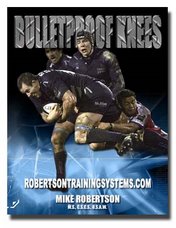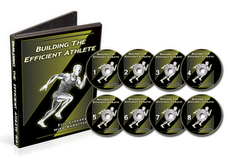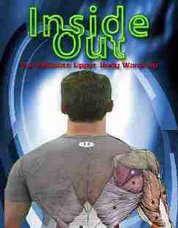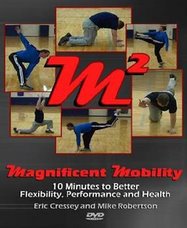One concept I keep coming back to is this: What’s more important, good programming or good program design?
On one hand, a good program is critical. If you have excellent form on the wrong exercises, you’re going to be consistently spinning your wheels; you’ll either make no progress, or worse yet, get injured.
On the other hand, technique is every bit as important. You could have the most amazing program in the world, geared 100% towards your every ache, pain and inefficiency. But if you perform that routine with bad technique, you’re every bit as likely to get, or stay, injured.
Program design comes down to equal parts art and science. You have to know the science to be able to utilize the art.
Technique refinement is a dynamic process – no matter how long you’ve lifted, you’ll always be refining technique.
The sooner you respect and understand the importance of each, the faster you’ll reach your training related goals.
Mike Robertson
High Octane Corrective Exercise and Performance Enhancement | www.RobertsonTrainingSystems.com
Wednesday, October 31, 2007
Tuesday, October 30, 2007
Scapular Winging – Just Hide It?
I was following a recent forum discussion where a young trainee asked about his scapular winging.
In looking at his pictures it was quite apparent that he was winging badly. But what really shocked me were some of the comments.
Some of the “forumites” told him to quite worrying about it, and instead focus on building more upper back musculature so it wasn’t seen anymore! Huh? Are we still thinking like this?
Scapular winging isn’t like polio or the plague; it may not kill or cripple you, but it can wreak havoc on your shoulders. Scapular control is vitally important; if we can’t stabilize our scapulae at rest (e.g. we’re winging), what business do we have loading the shoulders with movements like overhead and bench presses?
Simple answer? No business whatsoever.
I preach efficiency for a reason. I’m not against the big exercises in any way, shape or form. What I am all about is minimizing risks and maximizing rewards.
Covering up scapular winging by “trying to put some meat on your back” is lousy advice at best. I’d imagine if this forum member followed that advice, he’d have major shoulder issues long before he ever developed his back to that degree.
In looking at his pictures it was quite apparent that he was winging badly. But what really shocked me were some of the comments.
Some of the “forumites” told him to quite worrying about it, and instead focus on building more upper back musculature so it wasn’t seen anymore! Huh? Are we still thinking like this?
Scapular winging isn’t like polio or the plague; it may not kill or cripple you, but it can wreak havoc on your shoulders. Scapular control is vitally important; if we can’t stabilize our scapulae at rest (e.g. we’re winging), what business do we have loading the shoulders with movements like overhead and bench presses?
Simple answer? No business whatsoever.
I preach efficiency for a reason. I’m not against the big exercises in any way, shape or form. What I am all about is minimizing risks and maximizing rewards.
Covering up scapular winging by “trying to put some meat on your back” is lousy advice at best. I’d imagine if this forum member followed that advice, he’d have major shoulder issues long before he ever developed his back to that degree.
Monday, October 29, 2007
Increasing Water Intake
By Dr. John Berardi
Sedentary individuals should drink at least 2L or about 8 cups of water per day, athletes should drink at least 3L or about 12 cups of water per day, and athletes in hot weather climates drink at least 4L or about 16 cups of water per day.
Since following these recommendations can prevent dehydration and can actually assist with fat loss, you’d have to be a desiccated fool to ignore them.
However, try as they might, some individuals find it difficult to ingest up to a gallon of water per day. So try out these three proven strategies for increasing water ingestion:
1- Drink cold water – cold water is more palatable, improving “mouth feel” and ingestion
2- Add lemon – lemon increases urge to drink and also kills bacteria
3- Chuggables – always carry some sort of jug of water around to ensure you’re drinking. Rubbermaid makes a nice blue top container (Chuggables) that we recommend to our clients.
If you like this tip and want to learn more about JB and his products, check out his Precision Nutrition website.
Sedentary individuals should drink at least 2L or about 8 cups of water per day, athletes should drink at least 3L or about 12 cups of water per day, and athletes in hot weather climates drink at least 4L or about 16 cups of water per day.
Since following these recommendations can prevent dehydration and can actually assist with fat loss, you’d have to be a desiccated fool to ignore them.
However, try as they might, some individuals find it difficult to ingest up to a gallon of water per day. So try out these three proven strategies for increasing water ingestion:
1- Drink cold water – cold water is more palatable, improving “mouth feel” and ingestion
2- Add lemon – lemon increases urge to drink and also kills bacteria
3- Chuggables – always carry some sort of jug of water around to ensure you’re drinking. Rubbermaid makes a nice blue top container (Chuggables) that we recommend to our clients.
If you like this tip and want to learn more about JB and his products, check out his Precision Nutrition website.
Wednesday, October 24, 2007
Use the "Muscle Beach" Effect!
Whenever applicable use the muscle beach effect. Stick your chest out as far as you can like you are at the beach; this will not only put a small arch in your upper and lower back, but it will also make your spine more rigid. This, combined with abdominal bracing (tightening the abdominal and gluteal musculature as if you are about to be punched), will not only help prevent injury, but help you add weight to the bar as well.
Tuesday, October 23, 2007
Mood Eating
By Dr. John Berardi
Most people eat based on their mood and/or some subjective feelings of hunger. They don’t eat based on what their bodies need. Think of it this way: you’re about to take a long drive on a stretch of highway with no gas station. Do you fail to stop for gas before you hit the road because you’re "not in the mood?" Of course not. Think of eating in the same way. Eating fuels your metabolic engine. So it’s time to start feeling like eating so that you can stop feeling like you’re scrawny.
If you like this tip and want to learn more about JB and his products, check out his Precision Nutrition website.
Mike Robertson
Most people eat based on their mood and/or some subjective feelings of hunger. They don’t eat based on what their bodies need. Think of it this way: you’re about to take a long drive on a stretch of highway with no gas station. Do you fail to stop for gas before you hit the road because you’re "not in the mood?" Of course not. Think of eating in the same way. Eating fuels your metabolic engine. So it’s time to start feeling like eating so that you can stop feeling like you’re scrawny.
If you like this tip and want to learn more about JB and his products, check out his Precision Nutrition website.
Mike Robertson
Labels:
John Berardi,
Mike Robertson,
Precision Nutrition
Thursday, October 18, 2007
Try the Hip Extension Test to see if your Glutes are Firing
The hip extension test is a simple way to determine how well your posterior chain is functioning. Lay face down on a table with your ankles hanging off the edge. You will either have to video tape yourself or have someone watch you. Raise one leg a few inches off the table; if the arch in your back increases or if your knee flexes (bends) then your glutes are not working properly. Try stretching your hip flexors and hamstrings, while adding in specific glute work to improve motor recruitment and control.
As well, if you want more tests just like this one, be sure to check out the "Building the Efficient Athlete" DVD series when it's released in a few months!
Mike Robertson
Help Your Clients Acheive Long-Term Knee Health
As well, if you want more tests just like this one, be sure to check out the "Building the Efficient Athlete" DVD series when it's released in a few months!
Mike Robertson
Help Your Clients Acheive Long-Term Knee Health
Wednesday, October 17, 2007
Toe-Out To Increase Your Depth
Most people have trouble achieving depth in the squat because their feet are pointed straight ahead. Try this for added effect: Set your feet up at the width you normally squat, and then point your toes straight forward to see how deep you can go with good form. Now, turn you toes out slightly and see how much farther you can go down. Not only will this help improve your depth, but turning the toes out gives you a wider base of support and improves stability.
Subscribe to:
Posts (Atom)








